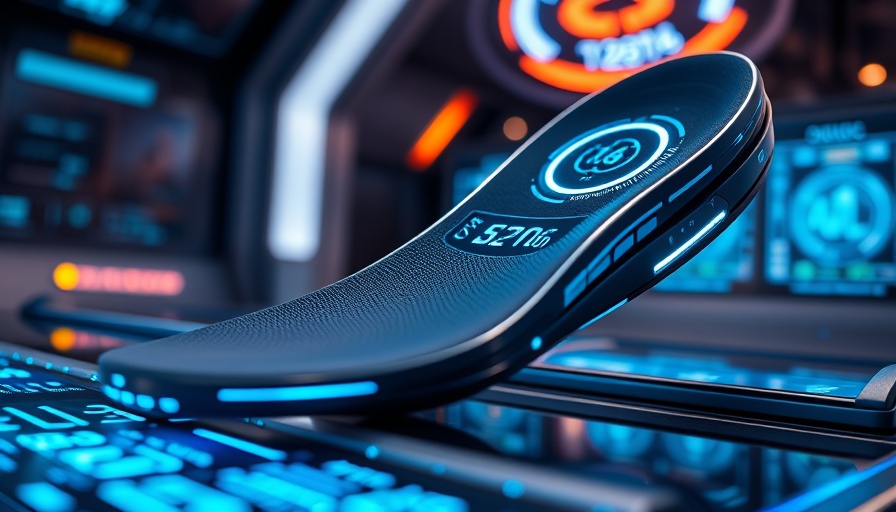
Revolutionizing Health Monitoring: The Smart Insole
Imagine a world where a simple insole in your shoe can provide you with comprehensive health insights about your walking patterns, running techniques, and even your standing posture. A recent development from Ohio State University has brought this closer to reality with a wearable smart insole that is set to transform personal health monitoring. Developed with 22 miniature pressure sensors and powered by innovative solar panels, this insole captures real-time data about how we move, potentially alerting wearers to serious health issues ranging from common foot ailments to conditions like Parkinson’s disease.
Understanding the Technology Behind the Innovation
The smart insole utilizes advanced technology to gather detailed biomechanical data. Each individual's walking patterns are as unique as their fingerprints, and the insole is designed to decode this information using machine learning algorithms. This allows the device not just to track movement, but also to distinguish between different physical states— from standing still to dynamic activities like running.
As Jinghua Li, a co-author of the study, states, "Our bodies carry lots of useful information that we're not even aware of... to extract and decode those signals is a significant advancement." This insight underscores the potential the smart insole has in aiding individuals to become more cognizant of their physical health, promoting proactive self-care.
The Impacts on Health Management
With 7% of Americans facing difficulties with activities such as walking or climbing stairs, the smart insole addresses a pertinent issue in public health. By offering real-time tracking and diagnostics, individuals can monitor their foot health and posture, which are often indicative of larger systemic issues.
Past attempts at creating wearable insoles have been hindered by energy constraints and inconsistent data reliability. However, this new model, empowered by high-resolution spatial sensing and self-powering capabilities, marks a promising endeavor in the realm of health technology.
The Integration of Artificial Intelligence
What sets this insole apart is its ability to use artificial intelligence to recognize varied motion states. Whether the user is seated, standing, or engaged in more vigorous activities, the AI adapts to offer personalized feedback. This integration is crucial for delivering tailored health insights that resonate with individual user behaviors.
Given the flexible materials used in the insoles, they are designed for continuous and safe usage, similarly to how smartwatches operate today. This opens a pathway for users to integrate health monitoring seamlessly into their daily lives.
Future Implications: Health Tracking & Wellness
The potential applications of this technology extend beyond personal use. Companies and organizations in the health tech sector can find immense value in investing in similar innovations. The data generated can lead to breakthroughs in personalized healthcare strategies and help formulate preventative measures tailored to monitoring conditions at a grassroots level.
As industries evolve and a data-driven approach becomes indispensable, wearable health technologies like the smart insole may set a new standard in how we approach wellness and preventive health management. For health and tech executives, investing in or partnering with companies at the forefront of this research could unlock numerous opportunities for growth and innovation.
Conclusion: Actively Engaging with Health Tech Advances
As we continue to navigate the challenges of health management in our fast-paced lives, technology is paving the way for more effective solutions. The smart insole is not just a product; it’s a catalyst for a larger conversation about how we can leverage tech for proactive health monitoring. Business leaders and professionals in the field should consider the implications of these advancements and explore how they can integrate similar technologies into their strategic approaches. By staying informed and engaged with innovations like this, organizations can not only improve their health outcomes but also demonstrate a commitment to employee well-being and corporate responsibility.
 Add Row
Add Row  Add
Add 




 Add Row
Add Row  Add
Add 

Write A Comment